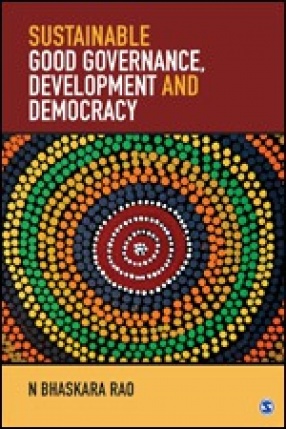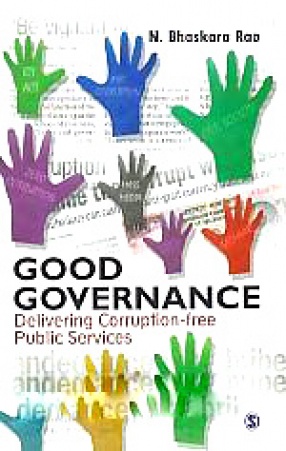Sustainable Good Governance, Development and Democracy
Despite seven decades of planned development efforts, there remains disparity in distribution of wealth in India. More than half of the national wealth is owned by merely 1 per cent of the population. In 2050, the Indian Republic completes 100 years. A hundred years should be good enough for a country to accomplish its democratic goals as envisaged by its constitution makers. Will India be able to fulfil its objectives in the next 30 years? Sustainable Good Governance, Development and Democracy addresses this question and argues that this is the time for a forthright perspective of what went wrong and how this should be corrected to make headway in the model of governance, development and democracy in India. The book argues that the three pillars of the State—the legislature, judiciary and executive—alone cannot accomplish these goals. It advocates six pillars, including the news media, civil society and political parties, to work in tandem with each other through a ‘checks and balances’ framework to achieve sustainable good governance.
Contents: Foreword. Preface. I. Seven Decades of Republic: 1. Whither Seven Decades of Planned Development?. 2. Decline in Party Politics!. 3. Country of Contradictions. 4. Pillars of the Republic. 5. Cost of Parliamentary Democracy!. II. Options and Alternatives: 6. Understanding Linkages. 7. Power to People. 8. Differentiating Parties. 9. A Development Paradigm. III. Good Governance, Not Rhetoric: 10. Origins of Good Governance as a Concept. 11. Different Perspectives. 12. Distinguishing Features of Governance. 13. Good Governance: Compulsions and Characteristics. 14. Sustaining Development. 15. Some Differentiating and Inhibiting Factors. 16. Proof of Pudding Indicators. IV. Pillars of the Republic: 17. Political Parties. 18. Declining Legislatures?. 19. The Executive/Civil Services/Bureaucracy. 20. Justice System and the Judiciary. 21. Basic Dilemma of the Fourth Estate. 22. Civil Society: Is It Not the Fifth Pillar?. 23. Education: A Differentiator. 24. ICT: The Double Edger. V. Facilitators and Destabilisers: 25. Negating Trends of Governance. 26. Is Government a Continuing One?. 27. Corruption—Public Face of Good Governance!. 28. NITI Ayog: The New Commission?. 29. Dampening Trends. 30. Desh Badal Raha Hai, Not Our Leaders. 31. Prajala Vaddaku Palana (Government at the Doorsteps). 32. Most Sought-after Public Services. 33. Hire- and Fire-based Appointments. 34. Institutions Sustain Governance. 35. Not Without a Future Outlook. 36. Slogans Could as Well Be the Mantras!. 37. Rights Regime. 38. Rights Regime and Mechanisms. 39. Basic Public Services for Good Governance. 40. Six Pillars of the State. 41. Dilemma of Right to Education?. 42. RTI Crying Out for Revival. 43. Could There Be a Formula to Go About?. 44. Initiatives and Instruments Is Having a Vision Not Good Governance?. 45. It’s a Six-pronged Pursuit. 46. ICT—A Differentiator. VI. Big Change with Citizens Initiatives: 47. Networking. 48. Systems and Institutions Are Important. 49. Education Route—A Sure Bet. 50. Independent Research and Training. Index.
Get it now and save 10%
BECOME A MEMBER









Bibliographic information